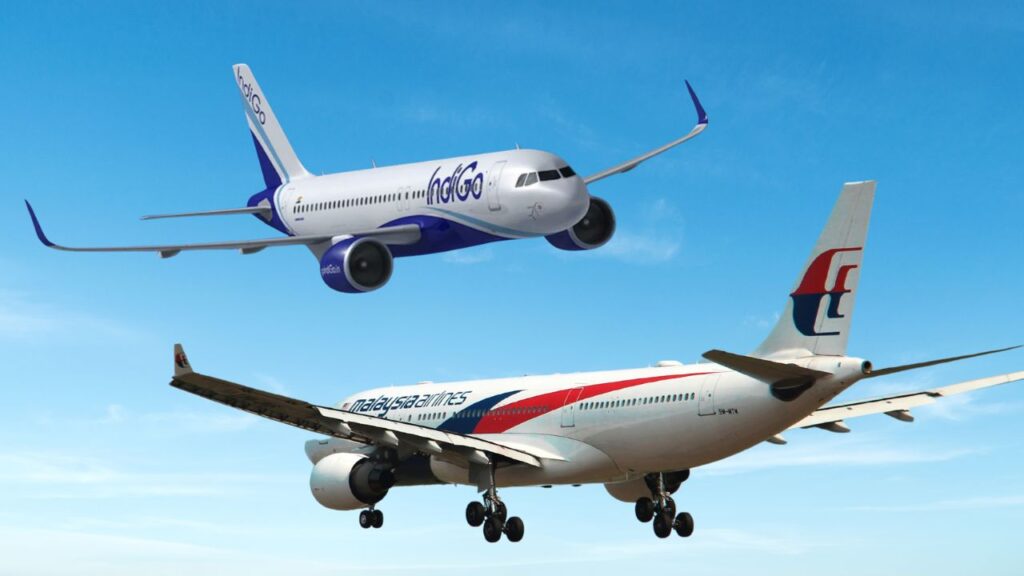Flying in the sky is no longer a dream in India. Booking a flight has become as routine as ordering dinner. But while taking off is easy, staying in the air profitably is where the real turbulence begins, just ask the airlines that have crashed out or are barely holding on. Amidst a history of struggling aviation brands, IndiGo has quietly rewritten the rulebook. Indigo business model has transformed the airline into India’s largest and most profitable carrier, setting a benchmark for the entire industry.
In a sector filled with high fuel costs, low margins, and intense competition, IndiGo has done something remarkable, it has not only survived but become India’s most profitable airline. While full-service carriers bleed money offering champagne and plush seats, IndiGo fills its planes with passengers, keeps its costs in check, and flies ahead with disciplined precision. So, what is it about the IndiGo flight booking process, or their IndiGo web check-in system that sets them apart? Let’s dive into how this business model, built on efficiency and cost control, has made IndiGo the frontrunner in India’s aviation industry. Here are 10 golden rules which make Indigo India’s most preferable airline among Indian travellers:
1. Power of Simplicity: Low-Cost, High-Efficiency
IndiGo operates on a pure low-cost carrier (LCC) model, which means they focus on providing affordable, no-frills travel. By eliminating non-essential services like complimentary meals and luxury lounges, IndiGo keeps its operational expenses low and passes those savings on to passengers. Services like IndiGo web check-in are designed for convenience, further improving efficiency. While many airlines struggle with excess baggage and premium services, IndiGo sticks to the basics, ensuring its customers enjoy affordable, reliable service without the added costs of luxury.

2. One Type Fits All: The Fleet Strategy
Another key to IndiGo’s success is its simple yet effective fleet strategy. By operating only Airbus A320 and A321 aircraft, the airline significantly reduces maintenance costs, pilot training expenses, and spare parts inventory. This standardization, a stark contrast to airlines like Air India and some other airlines with mixed fleets, gives IndiGo a major advantage in cost control. This is why IndiGo’s flight status is often synonymous with punctuality and efficiency. While other airlines juggle different aircraft types, IndiGo’s streamlined operations keep everything running smoothly and at lower costs.
3. Every Minute Counts: High Aircraft Utilization
What makes IndiGo truly stand out in the Indian aviation market is its high aircraft utilization. The airline achieves quick turnaround times, usually under 30 minutes, meaning planes spend less time on the ground and more time in the air. This quick service maximizes revenue per aircraft, and the IndiGo flight status shows high efficiency, with most flights operating on time. Inefficient aircraft utilization is a problem for many of its competitors, who suffer from idle aircraft and higher fixed costs.

4. Route Smart, Not Route Big
Rather than flying loss-making long-haul international routes, IndiGo focuses on profitable short-haul and domestic routes. These routes are often underserved, especially in Tier-2 and Tier-3 cities, where demand for air travel is rising rapidly. IndiGo flight booking is made easier by its focus on connectivity between key cities in India, making it a go-to choice for travelers. This cost-effective strategy allows IndiGo to serve a wider audience while other airlines are caught up in struggling to make international routes profitable.
5. Fueling Profits: Fuel Cost Management
One of the biggest expenses for any airline is fuel, and IndiGo has learned to manage it wisely. With fuel-efficient aircraft like the A321neo and a fuel hedging strategy, IndiGo stays ahead of rising fuel prices. Their aircraft consume less fuel per seat, ensuring that they maintain profitability even when fuel prices fluctuate. In contrast, many of India’s legacy carriers still operate older, fuel-guzzling planes, which significantly impact their financials.

6. Lease, Don’t Own: Smart Aircraft Financing
Rather than bogging itself down with heavy capital costs, IndiGo uses the sale-and-leaseback model. This means IndiGo purchases aircraft, sells them to leasing companies, and then leases them back. This strategy frees up cash for expansion and reduces debt burdens, while also ensuring that IndiGo doesn’t tie up capital in expensive assets. This model has allowed IndiGo to remain nimble in its financial operations, whereas many competitors struggle with large capital investments and debt.
7. Industry’s Lowest CASK: Cost Per Seat
IndiGo consistently maintains the lowest cost per available seat kilometer (CASK) in the industry, meaning it spends less on operations for every seat it fills. From staffing to maintenance and airport costs, every facet of the airline’s operation is optimized for efficiency. Other airlines, burdened by inefficiencies, have higher operating expenses and struggle to keep their costs in check. For IndiGo, every small saving adds up, keeping them ahead of the competition.

8. Beyond Tickets: Strong Ancillary Revenue
Apart from ticket sales, IndiGo has found several ways to maximize revenue through ancillary services. From baggage fees to seat selection, in-flight meals, and even IndiGo cargo tracking services, the airline generates significant additional income. Many competitors fail to tap into these income streams, which helps IndiGo boost its profitability. While others remain dependent on ticket sales, IndiGo has diversified its revenue, offering services that enhance the passenger experience while contributing to the bottom line.
9. No Frills, No Fantasy
While other airlines lavish their passengers with business-class cabins and frequent flyer programs, IndiGo avoids the temptation to go premium. By focusing purely on volume and affordability, IndiGo has built a loyal customer base that appreciates its no-frills approach. This simplicity ensures that IndiGo maintains a strong financial position, whereas other airlines with expensive premium services struggle to turn a profit.
10. Financial Discipline That’s Rare in Aviation
While many airlines in India have been burdened by debt and mismanagement, IndiGo maintains a strong balance sheet and minimal debt. By focusing on cash flow and operational efficiency, it has stayed profitable in an industry that often operates in the red. IndiGo customer care and its disciplined financial strategy have allowed it to expand without overextending itself, unlike competitors who have expanded recklessly and faced financial turmoil.

IndiGo Business Model: Fly Simple, Fly Smart
What’s clear is that IndiGo’s business model isn’t just about flying from point A to point B, it’s about doing it in the most efficient way possible. By keeping costs low, simplifying operations, and maximizing aircraft utilization, IndiGo has become India’s leading airline, and IndiGo careers are increasingly sought after in the aviation industry. From IndiGo’s PNR status to IndiGo boarding pass systems, the airline has mastered the art of creating a seamless experience that ensures customer loyalty.
In a space where most airlines are caught in a race to offer premium services and new routes, IndiGo has embraced the philosophy of “less is more”, and it’s working. Its ability to keep costs low, expand smartly, and build a sustainable business has made it the most profitable airline in India today.


